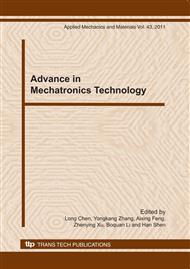p.401
p.405
p.409
p.414
p.420
p.424
p.430
p.434
p.438
Experimental Research on the Surface Roughness Characteristics in Ultrasonic Vibration Lapped Surface of Titanium Alloy
Abstract:
Based on the machining principle of ultrasonic vibration lapping, the surface roughness characteristics of plastic difficult-to-machine titanium alloys are studied through experiments using self-developed ultrasonic vibration lapping device. And the effects of workpiece speed, ultrasonic amplitude and grain size on surface roughness were researched by using single-factor testing way. The research results show that surface roughness is decreased to a certain extent for the assistance of ultrasonic vibration. The corresponding results provide certain reference value for the optimization of processing parameter in ultrasonic vibration lapping.
Info:
Periodical:
Pages:
420-423
Citation:
Online since:
December 2010
Price:
Сopyright:
© 2011 Trans Tech Publications Ltd. All Rights Reserved
Share:
Citation:


